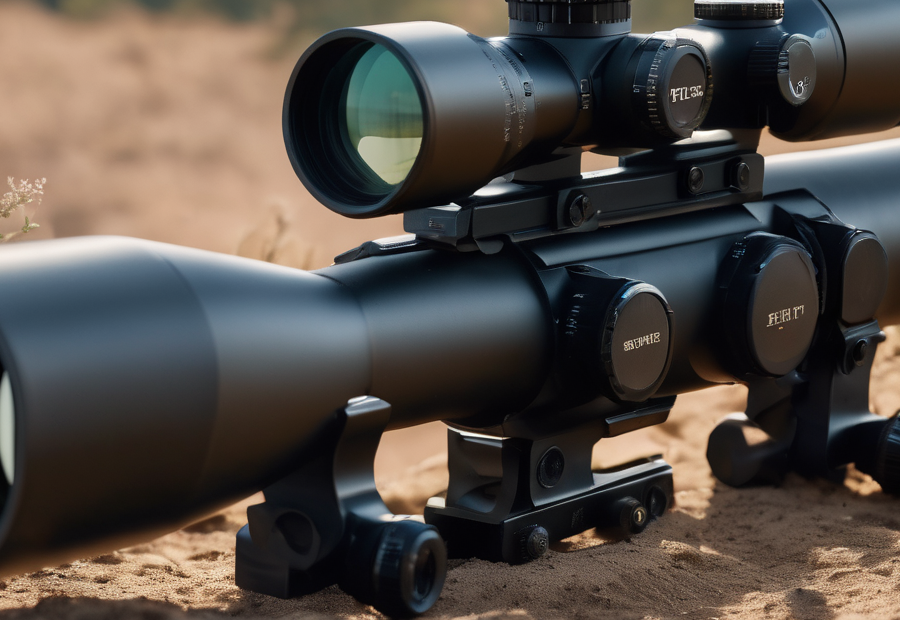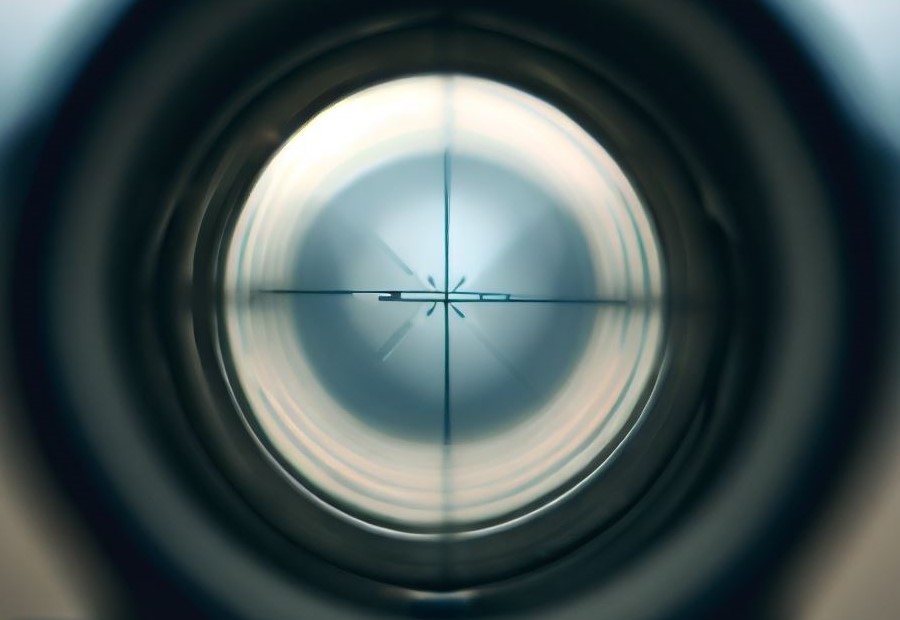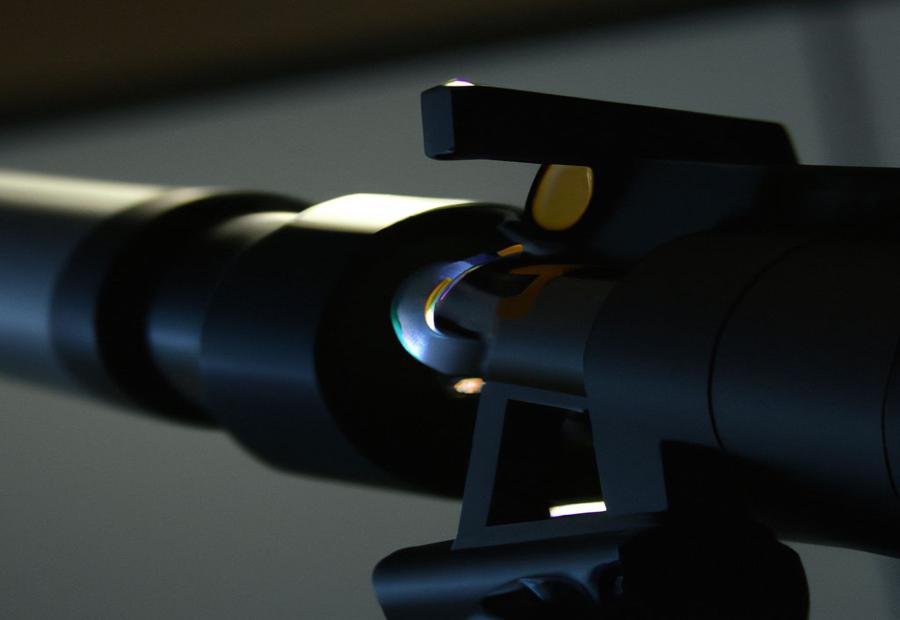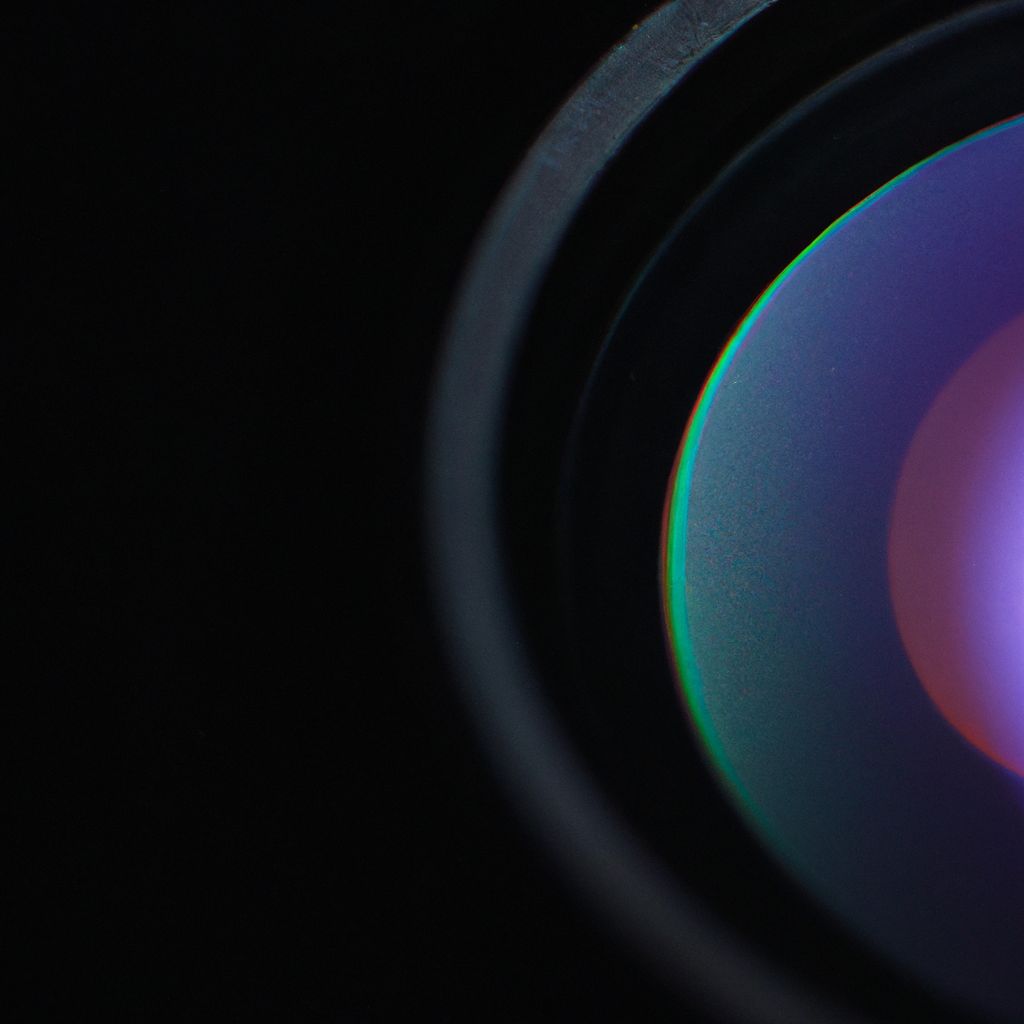Understanding the difference between first focal planes and second focal plane scopes is essential for anyone looking to purchase a rifle scope. The focal plane refers to the position of the reticle within the scope and plays a crucial role in determining how the scope functions and its practical applications.
A first focal plane scope (FFP) is a type of scope where the reticle appears to change size as the magnification is adjusted. This means that the reticle’s measurements remain accurate at all magnification levels.
In comparison, a second focal plane scope (SFP) has a fixed reticle size, so the reticle’s measurements only hold true at a specific magnification level, typically the highest setting.
The advantages of first focal plane scopes include the ability to accurately estimate range and make adjustments using the reticle at any magnification level. This makes them suitable for long-range shooting and tactical situations.
On the other hand, second focal plane scopes are often more affordable and have a clearer reticle image since the reticle is not affected by changes in magnification. They are commonly used for hunting and general shooting purposes.
Key differences between first and second focal plane scopes include the placement of the reticle, size and visibility of the reticle, range estimation accuracy, pricing, and use cases.
Ultimately, choosing the right scope depends on your specific needs and shooting preferences. Understanding the differences between first and second focal plane scopes will help you make an informed decision and select the scope that best suits your requirements.
Understanding Focal Plane in Scopes

When choosing the right scope for your needs, it is crucial to understand the focal plane in scopes. The focal plane determines how the reticle appears when adjusting the magnification.
Let’s take a look at the differences between the first focal plane (FFP) and the second focal plane (SFP) scopes in an easy-to-understand table:
| First Focal Plane (FFP) | Second Focal Plane (SFP) |
| The reticle size changes as the magnification is adjusted. | The reticle size remains constant regardless of magnification. |
| Allows for accurate holdovers and range estimations at any magnification. | Holdovers and range estimations are only accurate at a specific magnification. |
| Preferred for long-range shooting and precision applications. | Commonly used for hunting and general shooting. |
| More expensive than SFP scopes. | Generally more affordable. |
The above table clearly illustrates the key differences between FFP and SFP scopes.
FFP scopes are ideal for long-range shooting and precision applications because the reticle size changes with the magnification. This allows for accurate holdovers and range estimations at any magnification level.
On the other hand, SFP scopes have a reticle size that remains constant regardless of magnification, making holdovers and range estimations accurate only at a specific magnification setting.
If you’re into hunting or general shooting, SFP scopes are commonly used due to their affordability. FFP scopes, on the other hand, tend to be more expensive.
By understanding these differences, you can confidently choose the right focal plane scope for your shooting needs.
What are First Focal Plane Scopes?

If you are wondering what a first focal plane scope is, it is a type of scope commonly used in firearms and optics. Unlike other scopes, the reticle or crosshairs are located in front of the magnification lens in a first focal plane scope.
This unique design allows the size of the reticle to increase or decrease accordingly when the magnification is adjusted. Consequently, the reticle appears to be the same size relative to the target at any magnification level.
First focal plane scopes are highly preferred by long-range shooters due to their ability to provide accurate holdovers, ranging, and wind compensation at any magnification.
These scopes are versatile and suitable for various shooting applications such as hunting and precision shooting competitions. Professionals and enthusiasts who require precise and consistent aiming at different distances often rely on first focal plane scopes.
If you frequently engage targets at various ranges and value accurate holdovers, incorporating a first focal plane scope into your arsenal could be highly beneficial.
Its unique design ensures that the reticle remains proportional to the target, regardless of the magnification level. This allows for precise aiming and improved shot placement, ultimately increasing your shooting proficiency and accuracy at different distances.
Consider investing in a first focal plane scope to enhance your shooting skills.
How Does a First Focal Plane Scope Work?
A first focal plane scope works by placing the reticle at the front focal plane of the scope. This means that as you zoom in or out, the reticle size will change in proportion to the target, ensuring accurate holdovers and range estimations at any magnification.
This is different from a second focal plane scope, where the reticle remains a fixed size regardless of the magnification.
The advantage of a first focal plane scope is that the reticle’s subtensions remain accurate at all magnifications, allowing for precise measurements, holdovers, and ranging. This makes it ideal for long-range shooting or situations where quick adjustments are necessary.
To understand how a first focal plane scope works, imagine a target at a distance. When you increase the magnification, the target appears bigger, and the reticle grows as well.
This ensures that the reticle markings always align with the target, regardless of the zoom level. It also allows for accurate ranging using the reticle’s sub-tensions.
What are the Advantages of First Focal Plane Scopes?
When considering a scope, it is crucial to take into account your specific shooting needs and preferences. If you participate in long-range shooting or need accurate adjustments for different magnifications, a first focal plane scope can be the perfect option.
The main advantages of first focal plane scopes include increased accuracy, better visibility, quick and precise adjustments, and flexibility in shooting scenarios.
One of the main advantages of first focal plane scopes is their ability to maintain accurate reticle measurements regardless of the magnification level. This means that the bullet drop compensation and range estimation features are consistent throughout the entire zoom range.
First focal plane scopes also provide better visibility because their reticle appears to grow or shrink along with the target as you adjust the magnification. This ensures that the reticle remains clearly visible and proportional to the target, resulting in improved accuracy and target acquisition.
In terms of adjustments, first focal plane scopes allow for quick and precise changes to the windage and elevation settings without requiring recalculation or conversion of reticle measurements. This feature enables faster and more accurate target adjustments in the field.
First focal plane scopes are particularly beneficial for flexible shooting scenarios, such as long-range shooting and tactical situations. They excel at estimating ranges and compensating for bullet drop at any magnification level, making them versatile for different shooting scenarios.
However, it is important to note that first focal plane scopes tend to be more expensive compared to second focal plane scopes. Therefore, it is vital to assess your shooting style and budget in order to make an informed decision. Happy shooting!
What is a Second Focal Plane Scope?

A second focal plane scope is a specific type of scope commonly utilized in rifles and firearms. It distinguishes itself by having the reticle positioned near the eyepiece, as opposed to the front lens.
Consequently, regardless of the level of zoom, the reticle size does not change. The primary advantage of utilizing a second focal plane scope is the provision of a consistent reticle size, irrespective of the magnification. This feature ensures precise aiming and accurate shots.
However, it is vital to consider that the holdover points on the reticle are only truly precise at a specific magnification level, typically the highest power setting. At other magnification levels, the holdover points might not align correctly with the target.
Thus, when employing a second focal plane scope, it is crucial to remember the appropriate magnification setting to ensure the accuracy of holdover points.
How Does a Second Focal Plane Scope Work?
A second focal plane scope works by placing the reticle on the rear focal plane of the scope. This means that when you adjust the magnification, the target image changes size, but the reticle stays the same size. The reticle in a second focal plane scope remains constant throughout all magnification settings.
The advantage of a second focal plane scope is that the reticle appears finer and does not obscure the target at higher magnifications. This makes it easier to accurately aim at distant targets. Additionally, second focal plane scopes are generally more affordable compared to first focal plane scopes.
What are the Advantages of Second Focal Plane Scopes?
- Consistent Reticle Size: Second focal plane scopes have a consistent reticle size regardless of the magnification level. This ensures that the reticle does not appear too large at high magnifications, allowing for more precise aiming and target acquisition.
- Clearer Sight Picture: The fixed reticle size in a second focal plane scope provides a clearer and more refined sight picture. This is especially beneficial when engaging targets at longer distances.
- Longer Battery Life: Unlike first focal plane scopes that rely on illuminated reticles for visibility, second focal plane scopes do not require illumination. As a result, they have a longer battery life.
- Cost-Effective: Second focal plane scopes are generally more affordable compared to their first focal plane counterparts. This makes them a great choice for shooters on a budget who still want reliable and accurate aiming.
Interesting fact: Second focal plane scopes are commonly used by hunters and long-range shooters due to their clear sight picture and cost-effectiveness.
Key Differences Between First Focal Plane and Second Focal Plane Scopes

Discover the fascinating contrasts between first focal plane and second focal plane scopes in this informative section.
From reticle placement to range estimation accuracy, we’ll dive into the key differences that define these scopes and their various use cases.
Get ready to explore how the size and visibility of the reticle, along with pricing considerations, play a crucial role in determining which scope suits your specific needs.
Let’s unravel the unique characteristics that make these scopes distinct from one another.
Reticle Placement
Reticle placement is a crucial factor to consider when choosing between first focal plane (FFP) and second focal plane (SFP) scopes. Here are some important points to understand:
- In an FFP scope, the reticle is located in the front focal plane, meaning it changes in size as you adjust the magnification. This ensures that the reticle remains accurate at all magnification levels.
- In an SFP scope, the reticle is located in the rear focal plane, which means it stays the same size regardless of magnification changes. This can be beneficial for quick target acquisition, as the reticle remains constant.
- When using an FFP scope, the reticle subtensions are valid at all magnification levels. This allows for accurate range estimation and holdover corrections, making it ideal for long-range shooting.
- In an SFP scope, the reticle subtensions are only accurate at a specific magnification level, known as the scope’s calibrated magnification. At other magnifications, the reticle subtensions may not be accurate for range estimation or holdover.
- When choosing between FFP and SFP scopes, consider your shooting style and the intended use of the scope. If you require accurate subtensions at all magnification levels or engage in long-range shooting, reticle placement is a crucial factor to consider and an FFP scope is recommended. If quick target acquisition and a constant reticle size are more important, an SFP scope may be suitable.
Understanding the differences in reticle placement between FFP and SFP scopes is essential in choosing the right scope for your specific shooting needs.
Size and Visibility of Reticle
When comparing first focal plane scopes and second focal plane scopes, one important aspect to consider is the size and visibility of the reticle. Here is a table outlining the key differences:
| First Focal Plane Scopes | Second Focal Plane Scopes |
| The size and visibility of the reticle changes as you adjust the magnification, appearing larger or smaller. This ensures the reticle remains proportionate to the target at all magnification levels. | The size and visibility of the reticle remains the same regardless of the magnification setting. It does not change in size. |
| The reticle is highly visible at higher magnification levels, making it easier to aim precisely. | The reticle may appear smaller at higher magnification levels, making it potentially harder to aim precisely. |
Fact: The size and visibility of the reticle can significantly impact the accuracy and ease of aiming with different types of scopes.
Range Estimation Accuracy
When deciding between a first focal plane scope and a second focal plane scope, one important factor to consider is range estimation accuracy. The table provided below highlights the differences in range estimation accuracy between these two types of scopes.
| First Focal Plane Scope | Second Focal Plane Scope |
| Range estimation remains accurate at all magnification settings. | Range estimation is accurate only at a specific magnification setting. |
| Allows for quick and easy range adjustments without the need for manual calculations. | Requires manual adjustments for range estimation at different magnification settings. |
| Provides precise and reliable range readings, even in low light conditions. | Range readings may become less precise at higher magnification settings or in low light conditions. |
Pro-tip: If you prioritize accurate range estimation in various shooting situations, opt for a first focal plane scope. Its ability to maintain range accuracy at all magnification settings can greatly enhance your shooting proficiency.
Pricing
Prices for scopes can vary significantly depending on the brand, model, and features. To give you an idea of the pricing range, here is a table showcasing the average prices for first focal plane (FFP) and second focal plane (SFP) scopes:
| Focal Plane | Average Price Range |
| First Focal Plane (FFP) | $500 – $3000+ |
| Second Focal Plane (SFP) | $200 – $1500 |
Please note that these prices are only estimates and can vary depending on factors such as brand reputation, optical quality, magnification range, and additional features like illuminated reticles.
When considering pricing, keep in mind your budget and the intended use of the scope. If you require a scope for professional applications or long-range shooting, investing in a higher-priced FFP scope might be beneficial.
On the other hand, if you’re a recreational shooter or have budget constraints, an SFP scope can provide excellent performance at a more affordable price.
Ultimately, the best scope choice for you will depend on your specific needs, shooting preferences, and budget. It’s important to thoroughly research and compare different models and brands to ensure you get the best value for your money.
Use Cases
The use cases of first focal plane (FFP) and second focal plane (SFP) scopes can vary depending on specific shooting requirements. Below is a table that highlights the key use cases of both types of scopes:
| First Focal Plane Scope | Second Focal Plane Scope |
|---|---|
| To enhance precision shooting at long distances | For general shooting and hunting applications |
| To estimate range accurately at any magnification level | For estimating range at a specific magnification level |
| When there is a need for quick adjustments and holdovers with accurate subtensions | When the reticle remains constant in size regardless of magnification |
| For dynamic shooting scenarios such as competitive shooting or tactical situations | For fixed magnification shooting or hunting in known distances |
The table highlights the main differences in use cases between first focal plane and second focal plane scopes. FFP scopes are well-suited for precision shooting at long distances and allow for accurate range estimation at any magnification level.
They are ideal for scenarios that require quick adjustments and holdovers with accurate subtensions.
On the other hand, SFP scopes are more suitable for general shooting and hunting applications, especially when the reticle size needs to remain constant regardless of magnification.
They are commonly used for fixed magnification shooting or hunting in known distances.
The choice between FFP and SFP scopes ultimately depends on the specific shooting needs and preferences of the user.
Choosing the Right Scope for Your Needs

Photo Credits: Paintballbuzz.Com by Paul Jackson
When choosing the right scope for your needs, there are several important factors to consider:
- Objective lens size: The size of the objective lens determines how much light the scope can gather, which affects the brightness and clarity of the image.
- Magnification range: Consider the range of magnification you require for your specific activities. A higher magnification allows for more precise target acquisition at longer distances.
- Reticle type: Different reticle types offer various benefits. For example, a duplex reticle is simple and easy to use, while a mil-dot reticle allows for range estimation.
- Construction quality: Look for scopes with sturdy construction and waterproof, fog-proof, and shockproof features to withstand various environmental conditions.
- Price: Determine your budget and compare scopes within that range, keeping in mind the features and quality that are most important to you.
When choosing the right scope for your needs, it is important to evaluate the objective lens size, consider the magnification range that suits your activities, select a reticle type that aligns with your preferences, and ensure the construction quality is robust enough to withstand different environmental conditions.
Additionally, keep your budget in mind and compare scopes to find the one that best matches your requirements.
Frequently Asked Questions
What is the difference between first focal plane and second focal plane scopes?
First focal plane (FFP) and second focal plane (SFP) scopes differ in the placement of the reticle and how it appears at different magnifications.
In FFP scopes, the reticle grows or shrinks as the magnification is adjusted, allowing for consistent holdover values and trajectory markings regardless of the magnification setting.
On the other hand, SFP scopes have a fixed reticle size at all magnifications, making it easier to see at all ranges but requiring mental math for holdover shots.
What are the pros and cons of using a first focal plane scope?
First focal plane scopes are preferred by long-range target shooters and military snipers due to their ability to maintain consistent holdover values and trajectory markings at any magnification level.
However, the thin reticle lines can be difficult to see against dark backgrounds, and the reticle may cover too much of the target at the highest magnification setting.
What are the advantages of using a second focal plane scope?
Second focal plane scopes have a fixed reticle size at all magnifications, making it easier to see and ensuring the reticle remains visible when zoomed out for low-light hunting.
They are also lighter, have great resolution, and are durable against heavy cartridges, making them popular among hunters and law enforcement.
However, the spacing for holdover in the reticle is only correct at the highest magnification setting, limiting their reliability for variable long-range shooting.
Which type of scope is better for close-range shooting?
For close-range shooting, a second focal plane scope is more suited as the reticle remains strong and easy-to-see even at the lowest magnification.
In contrast, a first focal plane scope can make it difficult to see the marks at low power, requiring zooming out and shrinking the target relative to the view.
Which type of scope is better for long-range shooting?
First focal plane scopes are preferred for long-range shooting due to the consistent holdover values and trajectory markings across all magnification levels.
The hash marks on the reticle represent the same value regardless of the magnification, allowing for precise holdovers and follow-up shots.
Second focal plane scopes make fractional MOA adjustments more difficult and their holdover marks are only accurate at one magnification setting.
How do I choose the right scope for my hunting style?
Choosing the right scope depends on personal preference and hunting style. FFP scopes are advantageous for long-range shooting and quick follow-up shots, while SFP scopes offer visibility throughout all magnification ranges.
If you are hunting in open country or require top magnification without excessive reticle thickness, an FFP scope may be recommended.
On the other hand, if you frequently stalk animals in lowlight conditions or prefer a scope with a consistent reticle size, an SFP scope may be more suitable.

